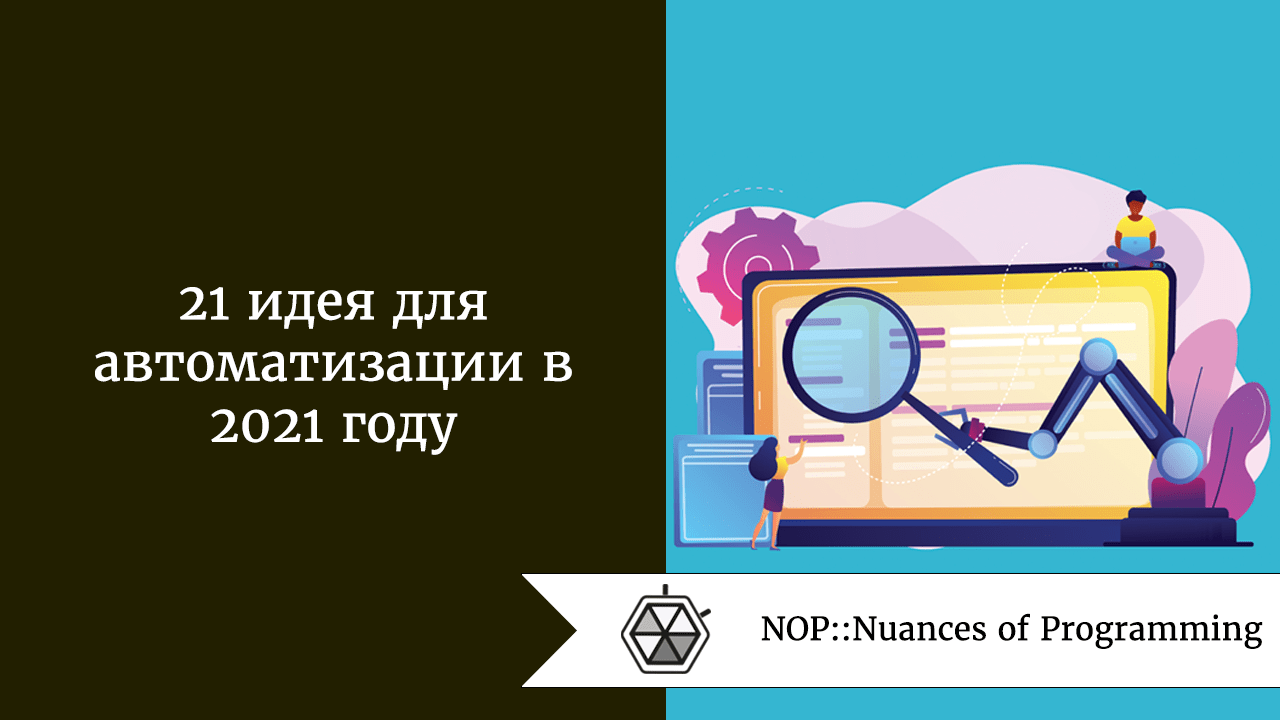
What else to automate?
Content
Today, the concept of "Automation as a Service" is making a career. This is facilitated by the development of AI, machine learning, the rapid deployment of the Internet of things and related infrastructure, as well as an increase in the number of automated digital devices. However, it is not necessary to simply install more robots. Today it is understood much broader and more flexible.
Currently, the most dynamic startups include companies such as LogSquare in Dubai, a provider of transport, logistics and warehousing automation solutions. A key component of LogSquare's offering is an automated storage and retrieval solution designed to minimize warehouse space usage and achieve higher levels of efficiency and productivity.
The company's management calls their proposal "soft automation" (1). Many companies, despite the pressure it has created, are still not ready for radical action, so LogSquare solutions are attractive to them, automated through small tweaks and rationalization.
When to step outside your "comfort zone"?
include planning and forecasting. Machine learning algorithms can be programmed to analyze statistical data, consider historical and environmental information, and then provide information about patterns or trends. This also applies to better reserve and inventory management. As well as the use of autonomous vehicles. on a permanent basis using the latest network technologies such as 5G, will provide vehicles and machines, such as autonomous vehicles, with independent decision-making.
Major mining companies such as Rio Tinto and BHP Billington have been investing in this area for several years by automating their trucks and heavy equipment (2). This can have many benefits – not only in terms of labor costs, but also by reducing the frequency of vehicle maintenance and raising health and safety standards. However, so far this only works in strictly controlled areas. When autonomous vehicles are taken outside of these comfort zones, the issue of their efficient and safe operation becomes extremely difficult. Eventually, however, they will have to go out into the outside world, figure it out, and work safely.
2. Rio Tinto Automated Mining Machines
Robotization industry is not enough. Group analysis of MPI shows that almost a third of manufacturing processes and devices, as well as non-manufacturing processes and devices, already contain/embedded intelligence. According to the consulting firm McKinsey & Company, the widespread use of preventive maintenance technology can reduce maintenance costs in companies by 20%, reduce unplanned downtime by 50%, and extend machine life by years. Preventive maintenance programs monitor devices with any number of performance metrics.
Buying robots outright can be an expensive undertaking. As mentioned at the beginning of this article, a new wave of services as a service is emerging. The idea is to rent robots at a reduced price, rather than buying them for yourself. In this way, robots can be implemented quickly and efficiently without risking huge investment costs. There are also companies offering modular solutions that allow manufacturers to spend only what they need. Companies offering such solutions include: ABB Ltd. Fanuc Corp, Sterraclimb.
Vending machine at home and in the yard
Agricultural production is one area that is predicted to be quickly conquered by automation. Automated agricultural implements can work for hours without rest and are already being used in many agribusiness sectors (3). They are predicted that, especially in developing countries, they will have the greatest global impact on the workforce in the long term, more so than in industry.
3. Agricultural robotic arm Iron Ox
Automation in agriculture is primarily farm management software supporting resource, crop and animal management. Precise management based on the analysis of historical and predictive data leads to energy savings, increased efficiency, optimization of the use of herbicides and pesticides. It's also animal data, from breeding patterns to genomics.
Intelligent Autonomous Systems irrigation systems help control and automate the use of water on farms. Everything is based on precisely collected and analyzed data, not from a hat, but from a sensor system that collects information and helps farmers monitor crop health, weather and soil quality.
Many companies now offer solutions for automated farming. One example is FieldMicro and its SmartFarm and FieldBot services. Farmers see and hear what FieldBot (4) sees and hears, a handheld remote controlled device that connects to agricultural equipment/software.
FieldBots equipped with a built-in solar panel, HD camera and microphone, as well as sensors that monitor temperature, air pressure, humidity, movement, sound, and more. Users can control their irrigation systems, divert valves, opening sliders, monitor reservoir and moisture levels, view live recordings, listen to live audio, and turn off pumps from the control center. FieldBot is controlled through the SmartFarm platform.which allows users to set rules for each FieldBot or multiple FieldBots working together. Rules can be set for any equipment connected to a FieldBot, which can then activate other equipment connected to another FieldBot. Access to the platform is possible through a smartphone, tablet or computer.
FieldMicro has partnered with well-known farm equipment manufacturer John Deere to provide data to the SmartFarm platform. Users will be able to see not only the location, but also other vehicle details such as fuel, oil and hydraulic system levels. Instructions can also be sent from the SmartFarm platform to machines. In addition, SmartFarm will display information about current usage and range of compatible John Deere equipment. The SmartFarm Location History also allows you to view the route taken by the machine in the last sixty days and includes information such as location, speed and direction. Farmers also have the ability to remotely access their John Deere machines to troubleshoot or make changes.
The number of industrial robots has tripled in a decade, from just over a million in 2010 to a target of 3,15 million in 2020. While automation can (and does) increase productivity, per capita output, and overall living standards, there are some aspects of automation that are of concern, such as its negative impact on low-skilled workers.
Routine and low-skill tasks tend to be easier for robots to perform than highly skilled non-routine tasks. This means that the increase in the number of robots or the increase in their efficiency threatens these jobs. In addition, more skilled workers tend to specialize in tasks that complement automation, such as robot design and maintenance, supervision, and control. As a result of automation, the demand for highly skilled workers and their wages may increase.
At the end of 2017, the McKinsey Global Institute published a report (5) in which it calculated that the relentless march of automation could cut up to 2030 million jobs in the United States alone by the year 73. “Automation is certainly a factor in the future of the workforce,” Elliot Dinkin, a well-known labor market expert, commented in the report. "However, there are indications that its impact on job cuts may be less than expected."
Dinkin also notes that, under certain circumstances, automation boosts business growth and thus encourages job growth rather than job loss. In 1913, the Ford Motor Company introduced the automobile assembly line, reducing the assembly time for a car from 12 hours to about an hour and a half, and allowing a significant increase in production. Since then, the auto industry has continued to increase automation and ... still employs people - in 2011-2017, despite automation, the number of jobs in this industry increased by almost 50%.
Too much automation leads to trouble, a recent example of which is the Tesla plant in California, where, as Elon Musk himself admitted, automation was exaggerated. This is what analysts from the reputable Wall Street firm Bernstein say. Elon Musk automated Tesla too much. The machines, which the visionary often said would revolutionize the automotive industry, cost the company so much that for a while there was even talk of the possibility of Tesla's bankruptcy.
Tesla's near-fully automated Fremont, California manufacturing facility, instead of speeding up and streamlining new car deliveries, has become a source of trouble for the company. The plant could not cope with the task of quickly releasing a new model of the Tesli 3 car (See also: ). The manufacturing process was judged to be too ambitious, risky and complex. “Tesla was spending about twice as much as a traditional car manufacturer per unit of production capacity,” analysts firm Berstein wrote in their analysis. “The company has ordered a huge number of Kuka robots. Not only are the stamping, painting and welding (as with most other automakers) automated, attempts have been made to automate the final assembly process. Here Tesla seems to have problems (as well as with welding and assembling batteries).
Bernstein adds that the world's largest automakers, namely the Japanese, are trying to limit automation because "it's expensive and statistically negatively correlated with quality." The Japanese approach is that you start the process first and then bring in the robots. Musk did the opposite. Analysts point out that other car companies that have tried to automate 100 percent of their manufacturing processes, including giants like Fiat and Volkswagen, have also failed.
5. The predicted level of replacement of human labor by various types of automation solutions.
Hackers love the industry
likely to accelerate the development and deployment of automation technologies. We wrote about this in one of the latest issues of MT. While automation can bring many benefits to the industry, it should not be forgotten that its development comes with new challenges, one of the biggest of which is security. In a recent report by NTT, entitled "Global Threat Intelligence Report 2020", among other things, such information that, for example, in the UK and Ireland, industrial production is the most attacked cyber sector. Nearly a third of all attacks are recorded in this area, with 21% of attacks worldwide relying on cyber attackers to scan systems and security systems.
“Industrial manufacturing appears to be one of the most targeted industries in the world, most often associated with intellectual property theft,” the NTT report says, but the industry is also increasingly grappling with “financial data leaks, risks associated with the global supply chain.” and risks of mismatched weaknesses.”
Commenting on the report, Rory Duncan of NTT Ltd. emphasized that: “The poor security of industrial technology has long been known - many systems are designed for performance, capacity and compliance, not IT security.” In the past, they also relied on some form of "cover-up". The protocols, formats, and interfaces in these systems were often complex and proprietary, and different from those used in information systems, making it difficult for attackers to mount a successful attack. As more and more systems appear on the network, hackers innovate and view these systems as vulnerable to attack.”
Security consultants IOActive recently launched a cyberattack on industrial robotics systems to provide evidence that it could disrupt large corporations. “Instead of encrypting the data, an attacker could attack key pieces of the robot’s software to keep the robot from working until the ransom is paid,” the researchers say. To prove their theory, the representatives of IOActive focused on NAO, a popular research and educational robot. It has "almost the same" operating system and weaknesses as SoftBank's even more famous Pepper. The attack uses an undocumented feature to gain remote control over a machine.
You can then disable normal administration features, change the robot's default features, and redirect data from all video and audio channels to a remote server on the Internet. The next steps of the attack include elevating user rights, violating the factory reset mechanism, and infecting all files in memory. In other words, they can harm a robot or even physically threaten someone.
If the automation process does not guarantee safety, it will slow down the process. It is hard to imagine that with such a desire to automate and robotize as much as possible, someone would neglect the security sphere.

